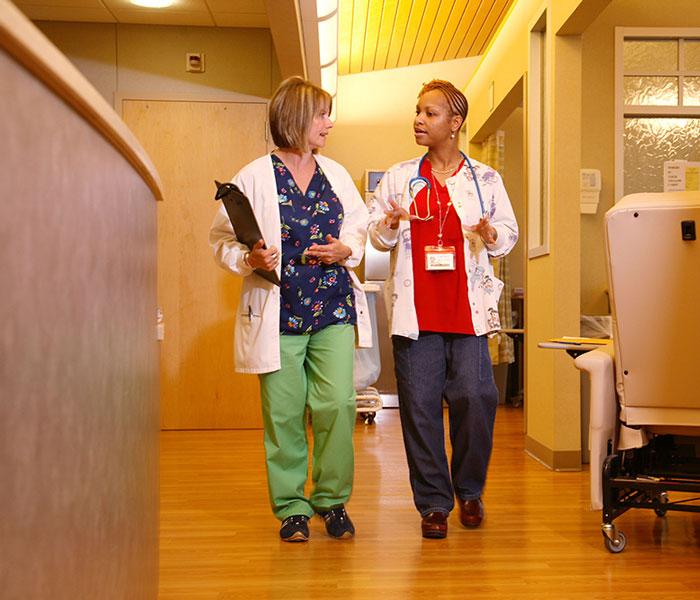Clinical environments demonstrating a strong culture of safety have optimized communication and teamwork among front-line staff, physicians, and leadership. A safe work environment is one in which the physical health and well-being of all staff are considered prerequisite for safe patient care. Consider for a moment the ways your workplace supports healthy behaviors on the part of employees.
- Do you have a wellness room available where you can take a 10 minute time out and relax in a quiet environment?
- Is there exercise equipment available to you for use during a break or before or after work—could you walk on a treadmill for 20 minutes prior to your shift or after work?
- Are there employee assistance resources available to help with life events that may be overwhelming and challenging?
Many of us will answer “yes” to these inquiries—these types of resources are not unusual. In a workplace that has “organized for safety,” there are expectations for employees maintaining their own health. There are also expectations within a culture of safety. We must monitor our own and each other’s behaviors for evidence that a team member may not be able to deliver safe and quality care.
Situation monitoring is a strategy used to monitor the care environment and each other for signs indicating an increased likelihood of a lapse in practice or mistakes that lead to patient harm and near-miss events. Nurses must also be aware of the degree to which they are “fit and ready” to deliver safe care. The “I’M SAFE” checklist described in the TeamSTEPPS (Team Strategies and Tools to Enhance Performance and Patient Safety) is a simple method to determine your ability to practice safety. I’M SAFE stands for
- Illness: Am I so ill or feeling bad that I can’t be sure I’m performing care safely?
- Medication: Is a medication I am taking impairing my ability to monitor the care environment for unsafe situation?
- Stress: Is there something on my mind that is distracting from my ability to maintain a mindful focus on patient care delivery?
- Alcohol/Drugs: Is my use of alcohol or illicit drugs affecting my focus and performance? Am I fit for duty?
- Fatigue: Am I suffering from lack of sleep to the degree that my judgment or abilities may be impaired?
- Eating and Elimination: Has it been more than six hours since I have eaten or used the restroom?
A work environment organized for safety is one in which nurses plan for all to leave the unit for a meal break and monitor each other for high fatigue and stress levels. A safety culture is also an environment in which staff feel free to speak up regarding fatigue levels or stress so that peers can help them be safe.
Handling Stress and Fatigue
ONS Putting Evidence Into Practice resources describe exercise or physical activity as effective in the management of stress and fatigue. We recommend that our patients “Get Up and Get Moving,” and nurses should also! Perhaps a 10-minute walk outside on a break would enhance your attention level and decrease stress during your shift.
Although taking a walk might not be a novel idea, what about intentionally making a stronger mind-body connection to enhance your well-being, health, and nursing practice? To promote nurse self-care and well-being, consider taking a mindfulness meditation or mindfulness-based stress reduction (MBSR) course. MBSR is yet another intervention for stress and anxiety that is recommended for people with cancer that nurses can use to enhance the safety of their practice and improve physical, psychosocial, and spiritual well-being.
Attributes of mindfulness are present-moment attention, awareness and non-judgmental acceptance. All attributes of safe practice. By learning mindfulness meditation and with regular practice, nurses have reduced their stress, decreased their emotional reactivity to clinical situations and enhanced attention and empathy when caring for patients.
Mindfulness meditation practices could be incorporated into your workday with a 10-minute sitting meditation, some gentle Hatha yoga, or perhaps mindful breathing. The motto of a one nurse meditation group of which I am aware is “Nurses lead with every mindful breath.” Take a mindful breath and consider exploring this very beneficial self-care behavior to manage stress and fatigue.






